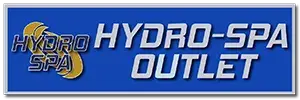In hot tub repair and maintenance, the ability to effectively troubleshoot and replace pumps and motors stands as a fundamental skill for ensuring the longevity and performance of your spa. Initial signs of pump failure, such as diminished water flow or strange noises, can often be addressed through careful inspection for blockages or leaks, and by assessing the electrical connections for integrity. For motors, issues might manifest as overheating or failure to start, necessitating a thorough evaluation of capacitors and wiring. Properly addressing these issues not only prevents further damage but also enhances the overall efficiency of the hot tub. However, the complexity of replacing these components correctly poses several challenges, which we will explore to ensure your repairs are both successful and durable.
Identifying Common Pump Issues
Many hot tub enthusiasts encounter pump issues at some point, ranging from noisy operation to complete failure. Identifying these problems early can prevent more significant issues down the line.
Common symptoms include weak water flow, indicating a possible clog or a failing pump impeller. Air in the pump system, often recognized by sputtering jets or gurgling noise, suggests a breach in the seal or a crack in the suction line.
Leaks around the pump often stem from a deteriorating shaft seal or loose fittings, requiring timely intervention to avert further damage. Understanding these signs fosters a sense of community among hot tub owners, as sharing solutions and preventive measures can significantly enhance the longevity and enjoyment of their investments.
Troubleshooting Motor Problems
Occasionally, hot tub owners may face motor problems that manifest as failure to start or erratic performance. A systematic approach is essential when confronting these issues.
First, verify the power supply; a tripped breaker or a blown fuse could be the culprit. Next, examine the motor’s capacitors; these components can degrade over time, leading to starting difficulties.
Listen for unusual noises like humming or clicking, which can indicate a jammed impeller or a faulty motor bearing. To diagnose these, you might need to remove the motor from its housing.
Always ensure the motor shaft turns freely by hand, as any resistance suggests internal issues that require professional attention. Remember, safety first: always disconnect power before handling electrical components.
Replacing Pumps and Motors
Replacing pumps and motors in a hot tub is a critical hot tub repair task that ensures the longevity and efficient operation of the unit. When selecting replacements, opt for components that match the specifications of your hot tub model to guarantee compatibility and efficiency.
Begin by isolating power to the unit to ensure safety. Carefully disconnect the existing pump and motor, noting the configuration and any peculiarities in the setup. Install the new motor and pump, aligning them precisely as the original ones were positioned. Reconnect all electrical and plumbing connections securely.
Once installed, test the system for any leaks or operational issues. Regular maintenance and timely replacement of these parts are essential for effective hot tub repair, promoting a reliable and enjoyable experience for users.
Read more:
